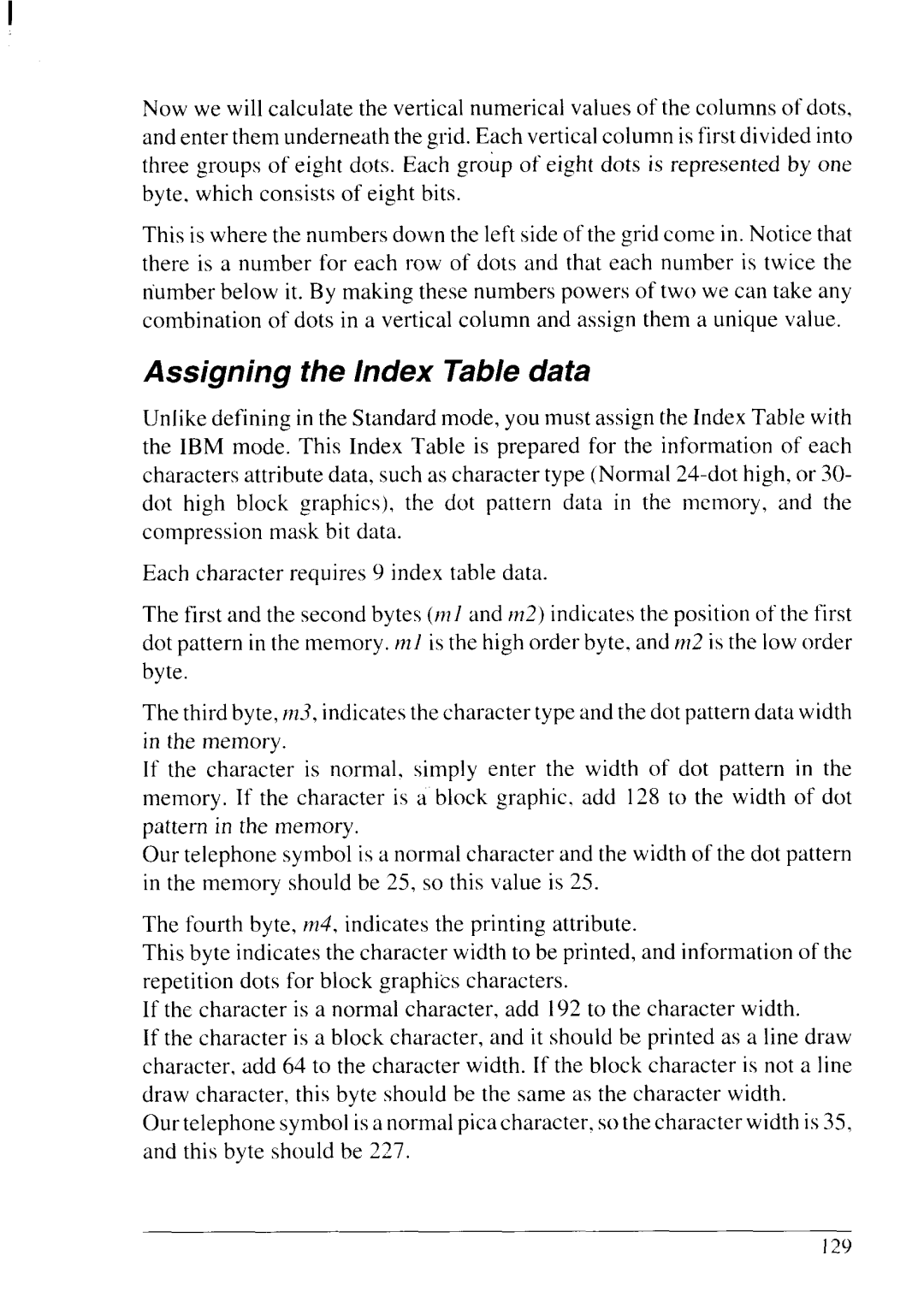
Now we will calculate the vertical numerical values of the columns of dots, and enter them underneath the grid. Each vertical column is first divided into three groups of eight dots. Each group of eight dots is represented by one byte. which consists of eight bits.
This is where the numbers down the left side of the grid come in. Notice that there is a number for each row of dots and that each number is twice the number below it. By making these numbers powers of two we can take any combination of dots in a vertical column and assign them a unique value.
Assigning the Index Table data
Unlike defining in the Standard mode, you must assign the Index Table with the IBM mode. This Index Table is prepared for the information of each characters attribute data, such as character type (Normal
Each character requires 9 index table data.
The first and the second bytes (m] and m2) indicates the position of the first dot pattern in the memory. ml is the high order byte. and m2 is the low order byte.
The third byte, m3, indicates the character type and the dot pattern data width in the memory.
If the character is normal. simply enter the width of dot pattern in the memory. If the character is a block graphic. add 128 to the width of dot pattern in the memory.
Our telephone symbol is a normal character and the width of the dot pattern in the memory should be 25, so this value is 25.
The fourth byte, m4, indicates the printing attribute.
This byte indicates the character width to be printed, and information of the repetition dots for block graphics characters.
If the character is a normal character, add 192 to the character width.
If the character is a block character, and it should be printed as a line draw character, add 64 to the character width. If the block character is not a line draw character, this byte should be the same as the character width.
Our telephone symbol is a normal pica character. so the character width is 35, and this byte should be 227.
129
